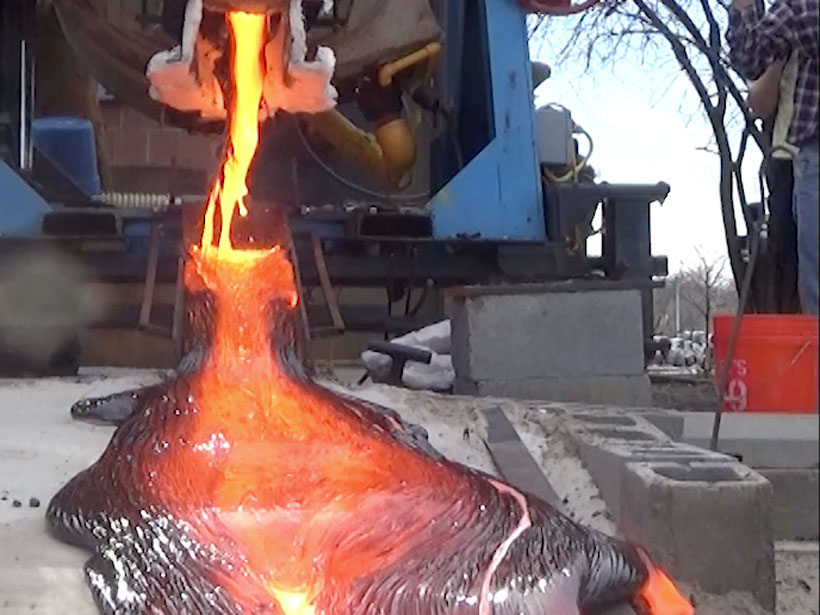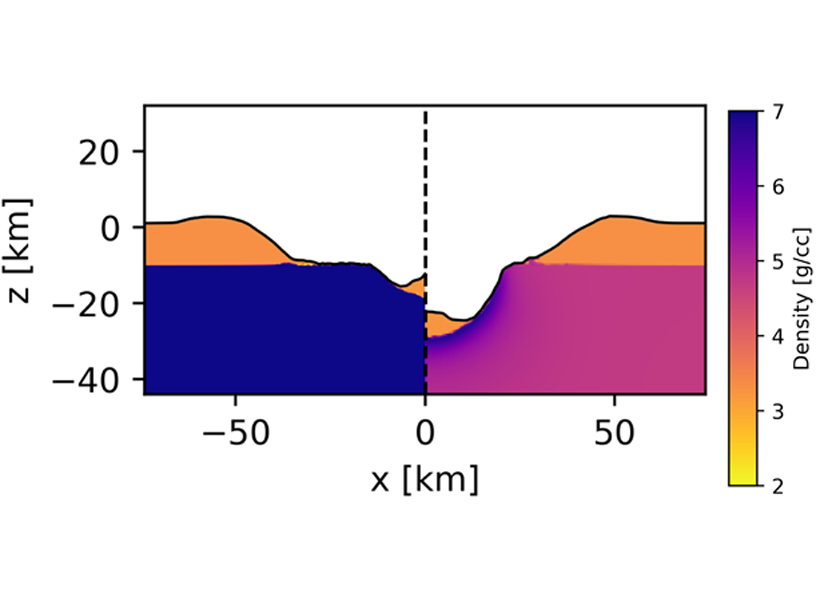Large-scale lava experiments are helping scientists imagine how metallic lava would flow across and shape a landscape, either on Earth or on a distant asteroid.
asteroids
An Asteroid “Double Disaster” Struck Germany in the Miocene
By analyzing sediments jostled by ground shaking, researchers have shown that two impact craters near Stuttgart were created by independent asteroid impacts rather than a binary asteroid strike.
Predicting the Unique Shape of Craters on Asteroid (16) Psyche
Models link the variety of crater shapes expected on (16) Psyche with the interior structure of this unique asteroid, in preparation for the arrival of the Psyche probe in 2026.
Up Close with an Active Asteroid
A new journal special collection investigates the ejection of particles from the asteroid Bennu and the implications of these observations for asteroid science.
Asteroid Impact, Not Volcanism, Likely Spelled Dinosaurs’ End
Using climate and habitat modeling, researchers show that solar dimming caused by an asteroid impact would have plunged the world into an “impact winter” and decimated dinosaur habitats.
Chicxulub Impact Crater Hosted a Long-Lived Hydrothermal System
Chemical and mineralogical evidence of fluid flow—potentially conducive to microscopic life—was revealed in rock cores extracted from the crater’s “peak ring.”
Sunburned Surface Reveals Asteroid Formation and Orbital Secrets
Thanks to spectacular high-resolution images from Hayabusa2, scientists can now better estimate how and when the asteroid Ryugu formed, how its orbit has changed over time, and what its surface looks like.
Dust from Colliding Asteroids Masqueraded as a Planet
New analysis of Hubble Space Telescope images suggests that Fomalhaut b, once believed to be an extrasolar planet, is, in fact, a cloud of dust that likely formed from the collision of enormous asteroids.
The Stuff That Psyche Is Made Of
The metallic asteroid Psyche appears to contain more rock than previously thought, shedding new light on possible scenarios for its formation in the early solar system.
Ryugu: A Not So Magnetic Asteroid
When the lander MASCOT, carried by Hayabusa2, touched down on asteroid Ryugu, it did not detect a magnetic field, even though meteorites that are spectroscopically similar to Ryugu have trace of one.










